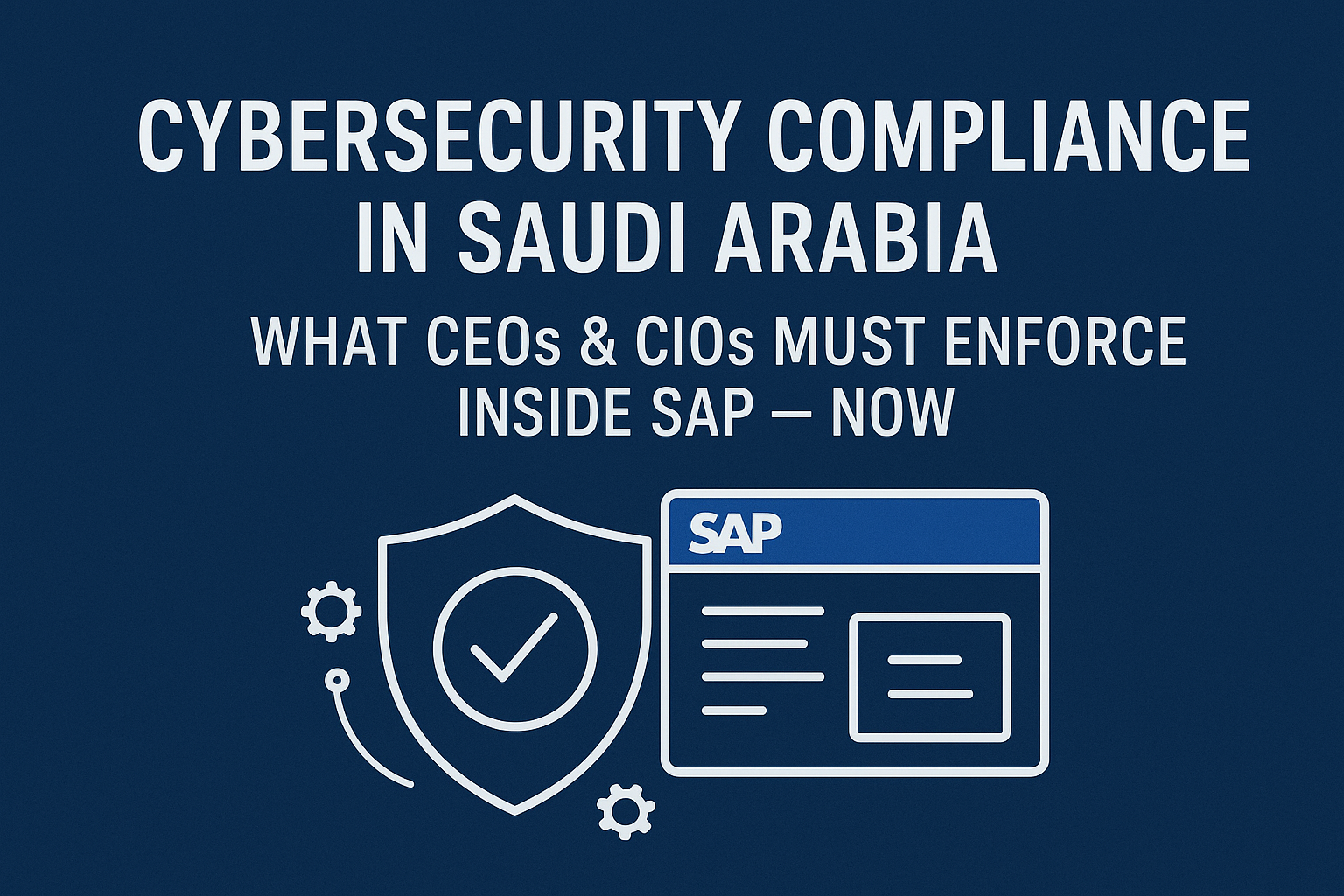Enterprise resource planning systems sit at the heart of modern businesses, with SAP serving as the digital backbone for organizations across industries. The complexity that makes SAP so powerful also presents intricate challenges for managing user access. Today, enterprises grapple with the dual mandates of ensuring robust security and seamless usability. Efficiently managing user access within SAP environments has become one of the most significant priorities for companies aiming to improve business agility, streamline operations and protect their most sensitive data. Establishing 'cleaner' SAP authorization frameworks is not merely about granting or restricting permissions; it means rethinking the way users interact with critical business applications and aligning access models to business needs rather than technical convenience. By focusing on the careful design and ongoing optimization of user access, organizations can reduce risks, save resources and support growth objectives effectively.
Understanding the Role of Authorization Concepts in SAP Environments
SAP authorization frameworks govern what users can see, approve or change within SAP systems. These frameworks are not static; they need continual refinement as business priorities shift and regulatory environments adjust. Whether an organization operates in manufacturing, retail or finance, the risk landscape is growing more complex—making it essential that SAP authorization models remain up-to-date and comprehensive. The evolution from on-premise SAP ECC systems to modern cloud-ready platforms such as S/4HANA introduces fresh access challenges. Tailored approaches like the Authorization Concept for S/4HANA Small-Market, Authorization Concept for S/4HANA Mid-Market and Authorization Concept for S/4HANA Enterprise-Market are now pivotal for companies of all sizes. Such solutions address varying business scales and complexity levels, helping to keep access management streamlined and compliant with contemporary regulations like GDPR and SOX.
The Value of a 'Cleaner' Framework: Simplicity Meets Security
Many companies wrestle with legacy SAP access models riddled with redundant permissions, overlapping roles and unclear responsibilities. These issues not only multiply the risk of unauthorized activities but also complicate audits and inflate operational costs. A 'clean' authorization framework, however, aims to maintain the minimum necessary access for users to perform their functions. This method brings clarity and transparency, transforming tangled permission structures into systems that are easier to manage and defend against internal and external threats. Implementing Authorization Concept for S/4HANA solutions across small, mid-sized and large enterprises underpins this strategy by offering scalable templates, risk-oriented controls and continuous monitoring mechanisms. The outcome is a transparent, well-defined structure that supports day-to-day tasks while minimizing the attack surface, supporting audit requirements and reducing the administrative overhead on IT teams.
Key Elements of Optimized User Access in SAP Systems
Optimized user access fundamentally rests on four cornerstones: Role-based access control (RBAC), segregation of duties (SoD), regular reviews and adaptive automation. RBAC simplifies the assignment of permissions by bundling access rights relevant to specific job roles, promoting consistency and reducing manual errors. SoD is crucial for preventing conflicts of interest and fraudulent activity by ensuring that critical tasks require oversight or collaboration, rather than single-person control. Periodic reviews keep access rights relevant and safe, especially when people change positions or leave the organization. Finally, automation embedded within the Authorization Concept for S/4HANA Small-Market, Mid-Market and Enterprise-Market solutions accelerates provisioning, modification and deprovisioning processes. This lowers the risk of human error and frees up valuable IT resources for more strategic initiatives, all while ensuring rapid adaptation to new business needs or audit requirements.
Tailoring Authorization Concepts for Different Market Segments
Addressing Small-Market Realities
Smaller companies may lack extensive in-house security teams, yet must address the same regulatory and operational demands as larger organizations. For these businesses, Authorization Concept for S/4HANA Small-Market focuses on simplicity and affordability, delivering a fast yet robust approach to structuring access. Clear templates, predefined roles and user provisioning workflows are engineered to promote secure, scalable growth without adding unnecessary complexity. By prioritizing automation and streamlined compliance, these models empower small enterprises to maintain control and auditability without straining their limited resources, ensuring that security becomes an enabler rather than an obstacle to business agility.
Adapting to Mid-Market Growth and Complexity
Mid-sized enterprises often find themselves at a crossroads, needing to advance security maturity while supporting rapid business expansion. The Authorization Concept for S/4HANA Mid-Market is specifically tailored to help bridge this gap. It introduces flexible frameworks that grow alongside the organization, integrating risk management with the agility required for strategic initiatives. Through a blend of standardization and customization, these models simplify the onboarding of new entities or processes, support hybrid system landscapes and address increasingly complicated regulatory frameworks. This approach enables mid-market companies to safeguard data, reduce costly SoD conflicts and support organizational change without major disruptions or the need for expensive in-house expertise.Meeting Enterprise-Market Demands for Scale and Complexity
Large enterprises with multiple international subsidiaries must solve the challenge of scale and diverse compliance requirements. The Authorization Concept for S/4HANA Enterprise-Market responds to this need by offering an integrated access governance system that maintains consistency across a vast SAP architecture while respecting local differences. Automation of access reviews, multi-tiered role models and powerful analytics help minimize errors and support ongoing compliance with global and industry-specific regulations. These solutions provide enterprise-level visibility into access risks, streamline complex migrations and enable the quick realignment of authorizations during mergers, acquisitions or organizational changes, allowing security and business performance to advance in lockstep.
Benefits Beyond Compliance: Operational Efficiency and User Empowerment
Optimizing user access within SAP systems yields significant business benefits that reach beyond compliance. Streamlined authorization concepts result in faster onboarding and offboarding, less time-consuming audits and a greater sense of trust in the security of business operations. Automated user lifecycle management ensures permissions are always up to date, reducing the risk of ghost accounts and critical access lingering in the system. Employees are empowered to focus on value-added activities rather than navigating cumbersome approval chains or requesting manual changes. As processes become more efficient and transparent through the proper use of Authorization Concepts across market segments, technology becomes a true business enabler that adapts to change and facilitates collaboration instead of being a barrier.
Establishing a 'cleaner' authorization framework should never be viewed as a one-time project. Business processes, regulatory obligations and threat landscapes are constantly shifting. A continuous improvement mindset helps ensure frameworks remain effective in the face of organizational change. Regular audits, proactive risk assessments and feedback from both IT and business stakeholders are essential for identifying gaps or potential enhancements. Leveraging modular features within Authorization Concepts for S/4HANA, organizations can iterate on their frameworks, swiftly addressing emerging risks or adapting to new technologies. Businesses benefit most when optimization becomes habitual, making sure their SAP system stays secure, scalable and always aligned with their objectives. By embedding this principle in daily operations, the risk of privilege creep and permission misuse diminishes, leaving a future-ready SAP environment that is easy to manage and defend.





